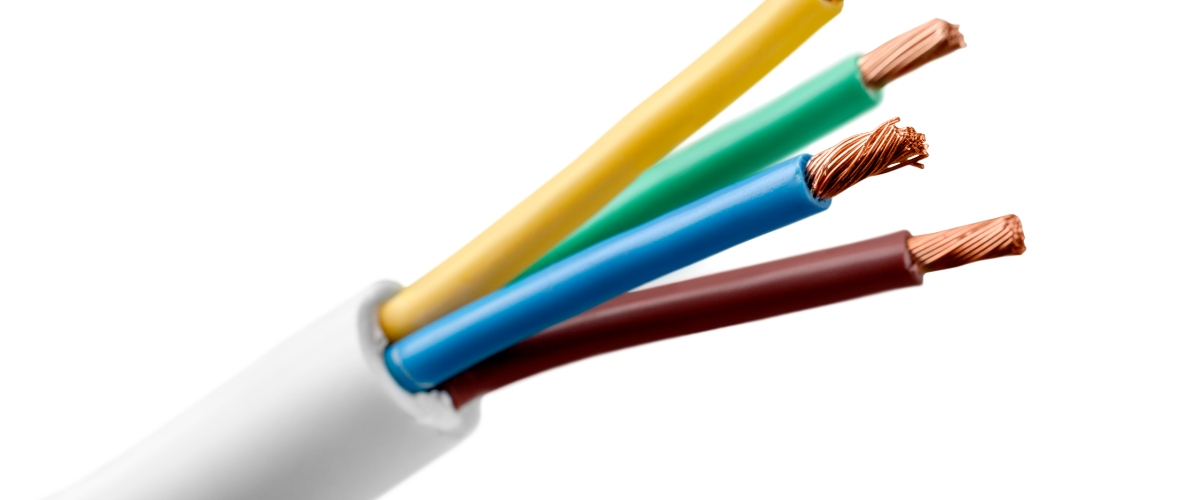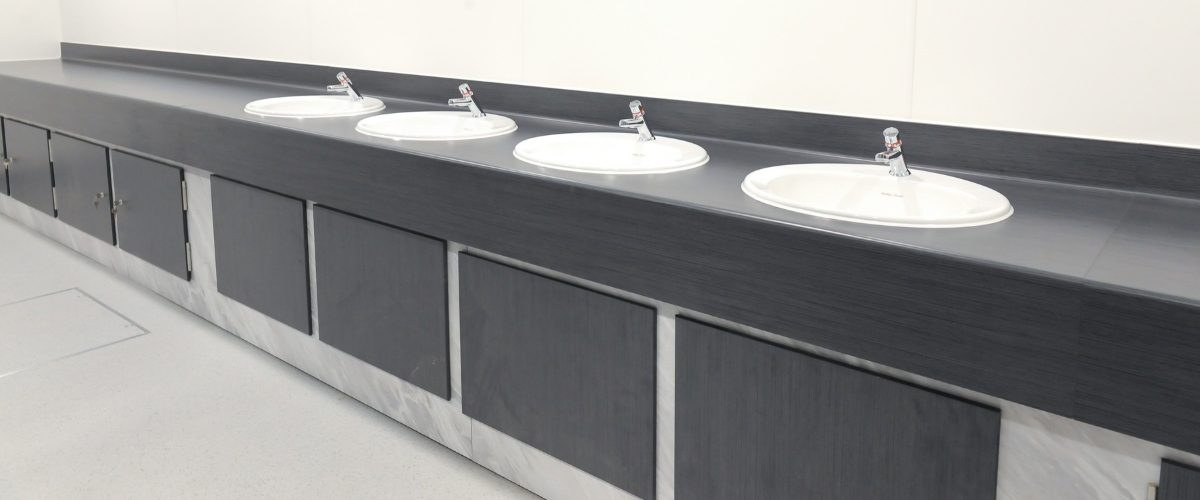What Size Cable for an Electric Shower?

Ever since electric showers came along, they’ve been revolutionising the wash space commercially, and domestically. But not all electric showers are created equal, power and output can vary depending on model, so here we explain what size cable you’re going to need depending on the type of shower you have procured.
Using the right sized cable for your shower
When installing an Electric Shower into your commercial washroom, one of the questions that’ll need answering is, “what size cable will I need for my shower?” The cable in question is very important, as the size of the cable used for the electric shower will dictate the type of shower that can be installed; or what kW rating of electric shower you can have.
The kW rating refers to the power and flow rate of a shower. Now you might be working with some restrictions here. Perhaps you already have a cable in-situ, and you are looking to refurbish the washroom and put in a shower similar to the one removed. Alternatively, you might have already sourced your electric shower and be looking to install it safely and properly so that it works to its full potential. Either way, we need to ensure that the cable has a sufficient kW rating that marries with your electric shower. The two go hand in hand.
Is a higher kW rating better?
The higher the kW rating of a shower, the greater the flow of heated water from the shower head; so making sure to get the right size cable for your electric shower is vital.
Measuring cable sizes can prove tricky, since they are measured by cross-section rather than by length or width (although they are usually stamped on the outer insulation of the cable).
With this in mind, the table below will show a range of different standard electric shower ratings and what the correct sized cable is needed to go with them.
| kW Electric Shower Rating | Recommended Cable Size |
| 6000 (6kW) | 6mm2 |
| 6500 (6.5 kW) | 6mm2 |
| 7000 (7 kW) | 6mm2 |
| 7500 (7.5 kW) | 10mm2 |
| 8000 (8 kW) | 10mm2 |
| 8500 (8.5 kW) | 10mm2 |
| 9000 (9 kW) | 10mm2 |
| 9500 (9.5 kW) | 10mm2 |
| 10,000 (10 kW) | 10mm2 |
| 10,500 (10.5 kW) | 16mm2 |
| 11,000 (11 kW) | 16mm2 |
Please refer to the manufacturer’s instructions for an exact guide to the size of cable you should use for your electric shower.
This article has been written in good faith as a helpful guide; please consult your manufacturer's installation manual for a full installation guide. Installation of the washroom products sold on the Commercial Washrooms website should only be carried out by fully trained and qualified tradespeople.
Matching your electric shower with drainage
If you have a high flow rate on your Electric Shower, then you are going to see a greater volume of water in a short period of time, as such, you might need to take a closer look at your commercial shower drainage systems. You also might want to look at alternative water saving methods.
On the Level Premium Shower Drainage
This type of Shower Drainage gives a very exuberant and high end finish. The floor tiles will run directly to the edge of the shower space with no visible floor drain. Instead, the water will run to the outer edges of the floor and disappear down a thin slither where a grout line would ordinarily meet the wall. Water then cascades down into a subfloor drain and moves away into the waste pipes. The finish is second-to-none luxury and is often used in hotels, spas, and formal corporate offices.
Floor gulley drainage
A popular option for showers, especially when tackling a bank of shower cubicles, is to install Aco Shower Floor gulleys. This can be fitted as one long piece, usually along the back wall of showers. Water will then run across the floor into these and be taken away towards the main waste outlet. The benefit of these being partnered with electric showers, is that the floor gulley creates a small reservoir for waste water to sit as it slowly drains away. It removes the risk of showers starting to back up due to too much water.
Water saving shower heads
Of course, another great way to manage water in the shower space, is the installation of water saving shower heads. Options like the RADA SF1 60 have been built to include a flow regulator. This means you can dial in the flow rate to a level where less water is passed through the shower head in a given time frame. Over the course of a year, particularly in high traffic environments like schools, colleges and leisure centres, this can equate to a huge saving in water.
As you can see, consideration for your shower needs to be made in tandem, ensuring you consider the kW usage, the size of the cable used to supply it, and also the removal of water at a sensible pace through proper drainage. As always, if you need any further help or assistance in getting your electric showers sorted, get in touch with one of the team on 01202 650900
MORE TO EXPLORE IN Related Posts

Mira Vie Electric Shower 8.5kW White

Aqualisa eVolve Electric Shower with Adjustable Head







